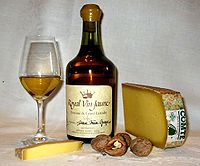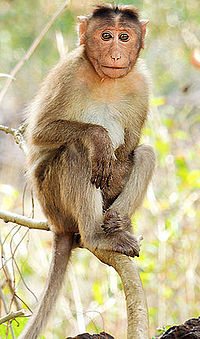
Diverse diets and low‐fiber, low‐tannin foraging preferences: Foraging criteria of Tibetan macaques (Macaca thibetana) at low altitude in Huangshan
Sign Up to like & getrecommendations! Published in 2022 at "Ecology and Evolution"
DOI: 10.1002/ece3.9338
Abstract: Abstract Nutrient composition and food availability determine food choices and foraging strategies of animals, while altitude and geographical location affect species distribution and food availability. Tibetan macaques (Macaca thibetana) have sophisticated foraging strategies as the… read more here.
Keywords: food; food availability; tannin; tibetan macaques ... See more keywords

Grooming networks reveal intra- and intersexual social relationships in Macaca thibetana
Sign Up to like & getrecommendations! Published in 2018 at "Primates"
DOI: 10.1007/s10329-018-00707-8
Abstract: The analysis of grooming networks is a powerful tool to examine individual social and sexual relationships and how these relationships change over time. In this study, we investigated the seasonal dynamics of intra- and intersexual… read more here.
Keywords: tibetan macaques; social relationships; grooming networks; intra intersexual ... See more keywords

Bridging may help young female Tibetan macaques Macaca thibetana learn to be a mother
Sign Up to like & getrecommendations! Published in 2018 at "Scientific Reports"
DOI: 10.1038/s41598-018-34406-7
Abstract: Attraction to infants is a common feature of non-human primates. Frequent affiliative male-infant interactions have been observed in many multimale, multifemale groups of macaques, including a behaviour termed ‘bridging’ in which two male macaques simultaneously… read more here.
Keywords: tibetan macaques; female tibetan; bridging; frequency ... See more keywords

Characterization of 17 full-length MHC-DQB1 alleles in Tibetan macaques (Macaca thibetana).
Sign Up to like & getrecommendations! Published in 2020 at "HLA"
DOI: 10.1111/tan.13914
Abstract: Seventeen full-length Math-DQB1 alleles were characterized in Tibetan macaques. read more here.
Keywords: tibetan macaques; full length; dqb1 alleles; characterization full ... See more keywords

Playing it cool: Characterizing social play, bout termination, and candidate play signals of juvenile and infant Tibetan macaques (Macaca thibetana)
Sign Up to like & getrecommendations! Published in 2018 at "Zoological Research"
DOI: 10.24272/j.issn.2095-8137.2018.048
Abstract: Play behaviors and signals during playful interactions with juvenile conspecifics are important for both the social and cognitive development of young animals. The social organization of a species can also influence juvenile social play. We… read more here.
Keywords: tibetan macaques; play signals; play; candidate play ... See more keywords

Interchange between grooming and infant handling in female Tibetan macaques (Macaca thibetana)
Sign Up to like & getrecommendations! Published in 2019 at "Zoological Research"
DOI: 10.24272/j.issn.2095-8137.2018.049
Abstract: In some non-human primates, infants function as a social tool that can bridge relationships among group members. Infants are a desired commodity for group members, and mothers control access to them. The biological market theory… read more here.
Keywords: tibetan macaques; macaques macaca; non mothers; grooming infant ... See more keywords

Effects of captive and primate-focused tourism on the gut microbiome of Tibetan macaques
Sign Up to like & getrecommendations! Published in 2022 at "Frontiers in Microbiology"
DOI: 10.3389/fmicb.2022.1023898
Abstract: Documenting the effects of anthropogenic activities on the gut microbiome of wild animals is important to their conservation practices. Captivity and ecotourism are generally considered two common anthropogenic disturbances on the health of nonhuman primates.… read more here.
Keywords: diversity; tourism; tibetan macaques; gut microbiome ... See more keywords